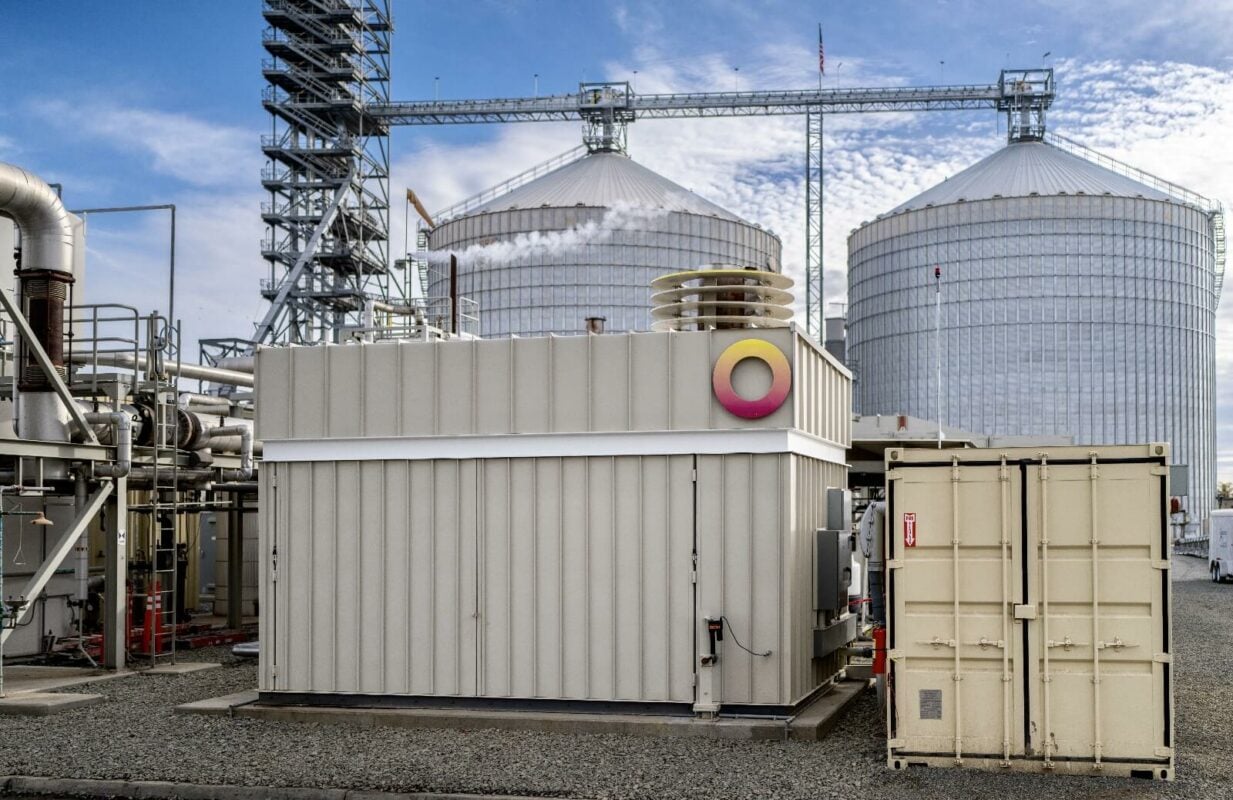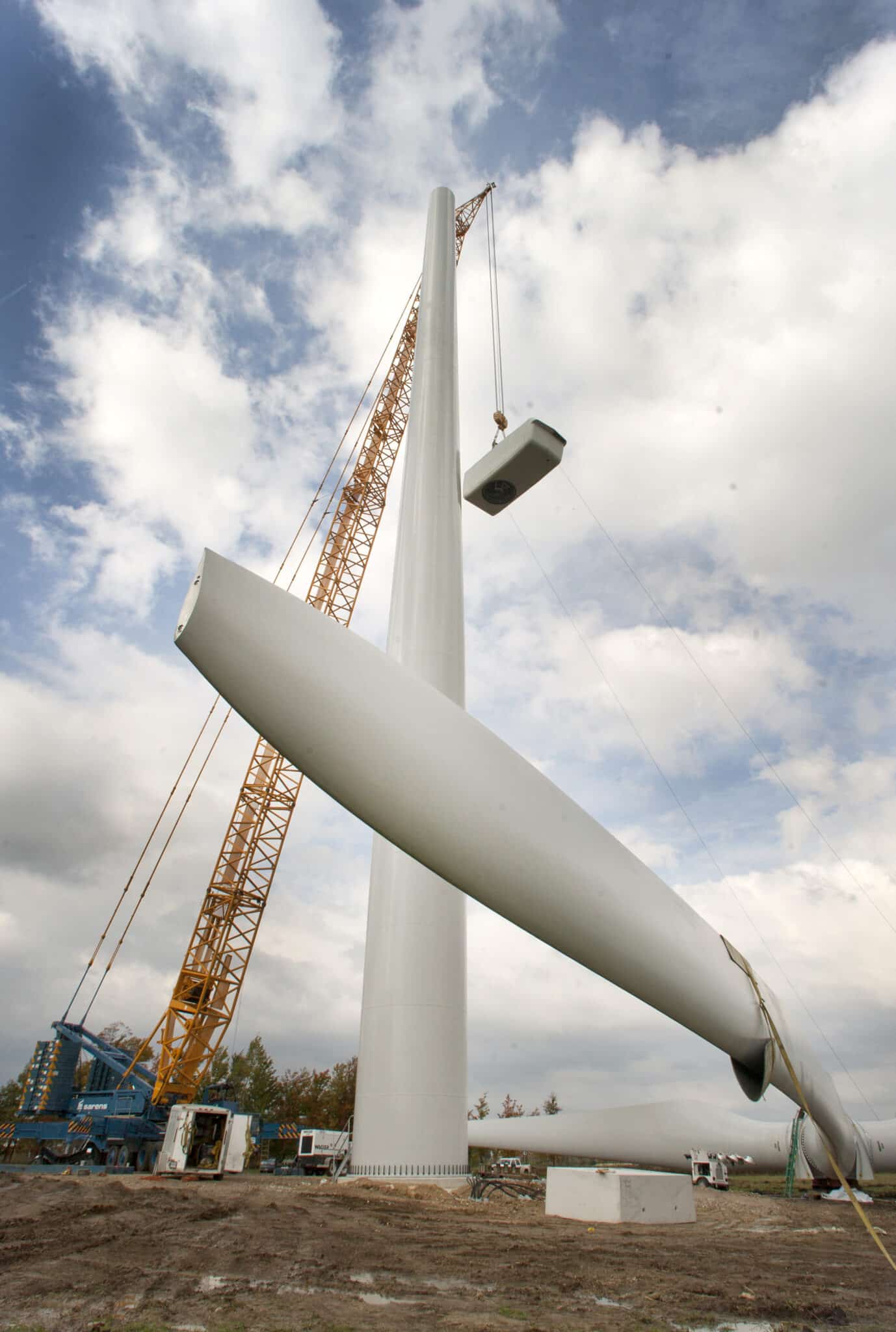Wisconsin leaders oblivious to issues driving AI, energy and climate change | Opinion – Milwaukee Journal Sentinel

Report on the Conflict Between Data Center Expansion and Sustainable Development Goals in Wisconsin
Executive Summary
The state of Wisconsin faces a significant challenge in reconciling its economic development strategies with its environmental and social commitments, as outlined by the United Nations Sustainable Development Goals (SDGs). The rapid expansion of energy-intensive data centers, driven by artificial intelligence (AI) applications, directly threatens the state’s progress towards its 2050 net-zero carbon emissions target. This development poses critical questions regarding energy policy, environmental stewardship, and equitable economic growth, impacting several key SDGs.
- The surge in energy demand from new data centers jeopardizes Wisconsin’s climate commitments, directly conflicting with SDG 13 (Climate Action).
- The reliance on fossil fuels to meet this demand undermines efforts to transition to renewable energy sources, as mandated by SDG 7 (Affordable and Clean Energy).
- Significant environmental and social impacts, including water consumption and limited local economic benefits, challenge SDG 6 (Clean Water and Sanitation) and SDG 8 (Decent Work and Economic Growth).
- Current regulatory frameworks appear inadequate for addressing these interconnected issues, highlighting a need for stronger institutions and integrated planning in line with SDG 16 (Peace, Justice and Strong Institutions) and SDG 17 (Partnerships for the Goals).
Analysis of Energy Demand and Climate Impact
Threats to SDG 7 (Affordable and Clean Energy) and SDG 13 (Climate Action)
Wisconsin’s objective to achieve net-zero carbon emissions by 2050 is being severely compromised by an unforeseen surge in energy demand. The primary driver is the construction and planning of large-scale data centers to support AI technologies.
- Projected Energy Increase: Data centers planned for Mount Pleasant, Kenosha, and Port Washington are projected to increase the state’s base-load power demand by at least 40% within the next five years. The Port Washington facility alone may eventually require as much energy as all residential homes in Wisconsin combined.
- Reversal of Decarbonization Efforts: Between 2005 and 2023, We Energies reduced carbon emissions by 54% by replacing coal with natural gas. However, the new energy demand is likely to be met by expanding fossil fuel use, which would reverse this progress and significantly slow, if not thwart, the path to net-zero emissions. This is in direct opposition to the targets of SDG 13 (Climate Action).
- Compromised Renewable Energy Transition: The scale of the new demand makes a transition to purely renewable sources in the short term challenging. The Cloverleaf data center in Port Washington, for example, has only committed to 30-40% renewable energy for its initial phase. This stalls progress towards the goal of increasing the share of renewable energy in the global energy mix, a key target of SDG 7 (Affordable and Clean Energy).
Comprehensive Sustainable Development Challenges
Impacts on Water, Economy, and Infrastructure
The development of data centers presents a multifaceted “wicked problem” that extends beyond energy and climate, touching on several other SDGs.
- SDG 6 (Clean Water and Sanitation): The enormous water requirements for cooling data centers place a significant strain on local water resources. This consumption has not been adequately considered in state-level planning, posing a risk to the sustainable management of water.
- SDG 8 (Decent Work and Economic Growth): The economic benefits for Wisconsin are questionable. After the construction phase, these facilities provide few permanent jobs, and profits are largely externalized. This model fails to promote inclusive and sustainable economic growth for local communities.
- SDG 9 (Industry, Innovation, and Infrastructure) & SDG 12 (Responsible Consumption and Production): While data centers represent new infrastructure, their current design reflects unsustainable consumption patterns. The existence of more energy-efficient AI technologies, such as those developed by DeepSeek which reportedly use 90% less energy, indicates that Wisconsin is not leveraging sustainable innovation. Adopting energy-intensive technology when more efficient alternatives are available contradicts the principles of responsible production and sustainable industrialization.
Recommendations for Integrated Governance
A Call for Integrated Resource Planning Aligned with SDG 16 and SDG 17
The current regulatory approach, where the Public Service Commission reviews energy infrastructure requests independently, is insufficient for addressing the interconnected challenges posed by data centers. This siloed decision-making process fails to account for the intertwined concerns of environmental health, social equity, and the common good.
- Strengthen Institutions (SDG 16): There is an urgent need to reform governance to ensure that decision-making is holistic and accounts for broad societal and environmental impacts. The current legislative and executive oversight appears oblivious to the full scope of consequences.
- Adopt Integrated Resource Planning (SDG 17): A move towards “Integrated Resource Planning” is essential. This framework would coordinate and integrate evaluation and decision-making across all facets of energy production and use, incorporating environmental limits and social well-being alongside economic considerations. Such a multi-stakeholder approach embodies the spirit of SDG 17 (Partnerships for the Goals) and is necessary to untangle the “wicked knot” of climate change and data center development.
Analysis of SDGs, Targets, and Indicators
1. Which SDGs are addressed or connected to the issues highlighted in the article?
- SDG 6: Clean Water and Sanitation
- SDG 7: Affordable and Clean Energy
- SDG 8: Decent Work and Economic Growth
- SDG 9: Industry, Innovation and Infrastructure
- SDG 11: Sustainable Cities and Communities
- SDG 12: Responsible Consumption and Production
- SDG 13: Climate Action
2. What specific targets under those SDGs can be identified based on the article’s content?
-
SDG 7: Affordable and Clean Energy
- Target 7.2: By 2030, increase substantially the share of renewable energy in the global energy mix. The article directly discusses this by contrasting Wisconsin’s reliance on fossil fuels (“return of coal” and “natural gas”) with the need to shift to renewables like wind and solar. It notes that one data center will only commit to “30-40% renewable energy,” highlighting a challenge to this target.
- Target 7.3: By 2030, double the global rate of improvement in energy efficiency. This is addressed by the mention of a Chinese AI program that “operates with about 10% of the energy of its US counterparts,” pointing to the potential for significant energy efficiency improvements in the tech industry.
- Target 7.a: By 2030, enhance international cooperation to facilitate access to clean energy research and technology, including renewable energy, energy efficiency and advanced and cleaner fossil-fuel technology, and promote investment in energy infrastructure and clean energy technology. The article implies this by mentioning the Chinese company’s energy-efficient AI program is “open-sourced so that anyone can use it,” suggesting a path for technology sharing.
-
SDG 13: Climate Action
- Target 13.2: Integrate climate change measures into national policies, strategies and planning. The article criticizes the lack of such integration in Wisconsin, stating that the state legislature “seem oblivious to the outsized impacts that huge data centers will have on… bottom-line climate goals.” It explicitly advocates for “Integrated Resource Planning” to address the “existential climate change dilemma.”
-
SDG 9: Industry, Innovation and Infrastructure
- Target 9.4: By 2030, upgrade infrastructure and retrofit industries to make them sustainable, with increased resource-use efficiency and greater adoption of clean and environmentally sound technologies and industrial processes. The article discusses the need to move away from fossil fuel-based energy infrastructure to support new industries (data centers) and highlights the inefficiency of current data center technology, which threatens Wisconsin’s goal to “produce electricity solely with net-zero carbon… emissions by 2050.”
-
SDG 6: Clean Water and Sanitation
- Target 6.4: By 2030, substantially increase water-use efficiency across all sectors and ensure sustainable withdrawals and supply of freshwater to address water scarcity. The article points to a direct challenge to this target by noting the “enormous need for water to cool data centers,” which legislators have apparently not considered.
-
SDG 8: Decent Work and Economic Growth
- Target 8.2: Achieve higher levels of economic productivity through diversification, technological upgrading and innovation. The article questions the local economic benefits of data centers, stating they “will provide few on-site jobs” and “most profits from their operations will be made almost entirely outside Wisconsin,” suggesting a failure to contribute to local economic growth and productivity.
-
SDG 11: Sustainable Cities and Communities
- Target 11.b: By 2020, substantially increase the number of cities and human settlements adopting and implementing integrated policies and plans towards inclusion, resource efficiency, mitigation and adaptation to climate change, and disaster risk reduction. The article’s central argument for adopting “Integrated Resource Planning” to manage the interconnected issues of energy, environment, and economy reflects the core principle of this target.
-
SDG 12: Responsible Consumption and Production
- Target 12.2: By 2030, achieve the sustainable management and efficient use of natural resources. The article highlights unsustainable consumption patterns, noting that data centers “will utilize more energy than all the homes in the city of Madison” and will cause a “huge 40% increase in the production of base-load power,” straining natural resources like energy and water.
3. Are there any indicators mentioned or implied in the article that can be used to measure progress towards the identified targets?
-
For Target 7.2 (Renewable energy share)
- Indicator: Share of renewable energy. The article provides specific figures, such as a data center committing to only “30-40% renewable energy” and China installing “about 60% of the world’s new wind and solar energy-based electrical power.”
-
For Target 13.2 / 9.4 (Climate action and sustainable infrastructure)
- Indicator: Greenhouse gas emissions. The article provides several data points: the goal of “net-zero carbon emissions by 2050,” a “54%” decline in emissions between 2005 and 2023, and a planned “26%” further reduction by 2030.
- Indicator: Increase in energy demand. The article states that data centers will cause a “40% increase in the production of base-load power,” which can be used to measure the pressure on emissions goals.
-
For Target 7.3 (Energy efficiency)
- Indicator: Energy consumption of technology. A direct comparative indicator is mentioned: a Chinese AI program “operates with about 10% of the energy of its US counterparts.”
-
For Target 8.2 (Decent work and economic growth)
- Indicator: Job creation. The article provides a qualitative indicator that can be quantified, stating that data centers “will provide few on-site jobs.”
-
For Target 6.4 (Water-use efficiency)
- Indicator: Water consumption for industrial processes. The article implies this indicator by highlighting the “enormous need for water to cool data centers.”
4. Table of SDGs, Targets, and Indicators
| SDGs | Targets | Indicators |
|---|---|---|
| SDG 7: Affordable and Clean Energy | 7.2: Increase substantially the share of renewable energy.
7.3: Double the global rate of improvement in energy efficiency. |
– Share of renewable energy used by new data centers (e.g., “30-40%”).
– Relative energy consumption of different technologies (e.g., AI program using “10% of the energy of its US counterparts”). |
| SDG 13: Climate Action | 13.2: Integrate climate change measures into national policies, strategies and planning. | – Greenhouse gas emissions reduction progress (e.g., “54% decline” since 2005). – Adherence to long-term climate goals (e.g., “net-zero carbon emissions by 2050”). |
| SDG 9: Industry, Innovation and Infrastructure | 9.4: Upgrade infrastructure and retrofit industries to make them sustainable. | – Increase in energy demand from new infrastructure (e.g., “40% increase in the production of base-load power”). |
| SDG 6: Clean Water and Sanitation | 6.4: Substantially increase water-use efficiency across all sectors. | – Water consumption for industrial cooling (implied by “enormous need for water to cool data centers”). |
| SDG 8: Decent Work and Economic Growth | 8.2: Achieve higher levels of economic productivity… | – Number of local jobs created by new industries (e.g., “few on-site jobs”). – Share of profits retained within the local economy. |
| SDG 11: Sustainable Cities and Communities | 11.b: …implementing integrated policies and plans towards… resource efficiency, mitigation and adaptation to climate change… | – Adoption of integrated planning frameworks (e.g., call for “Integrated Resource Planning”). |
| SDG 12: Responsible Consumption and Production | 12.2: Achieve the sustainable management and efficient use of natural resources. | – Total energy consumption of new facilities (e.g., “more energy than all the homes in the city of Madison”). |
Source: jsonline.com

What is Your Reaction?
 Like
0
Like
0
 Dislike
0
Dislike
0
 Love
0
Love
0
 Funny
0
Funny
0
 Angry
0
Angry
0
 Sad
0
Sad
0
 Wow
0
Wow
0













































































